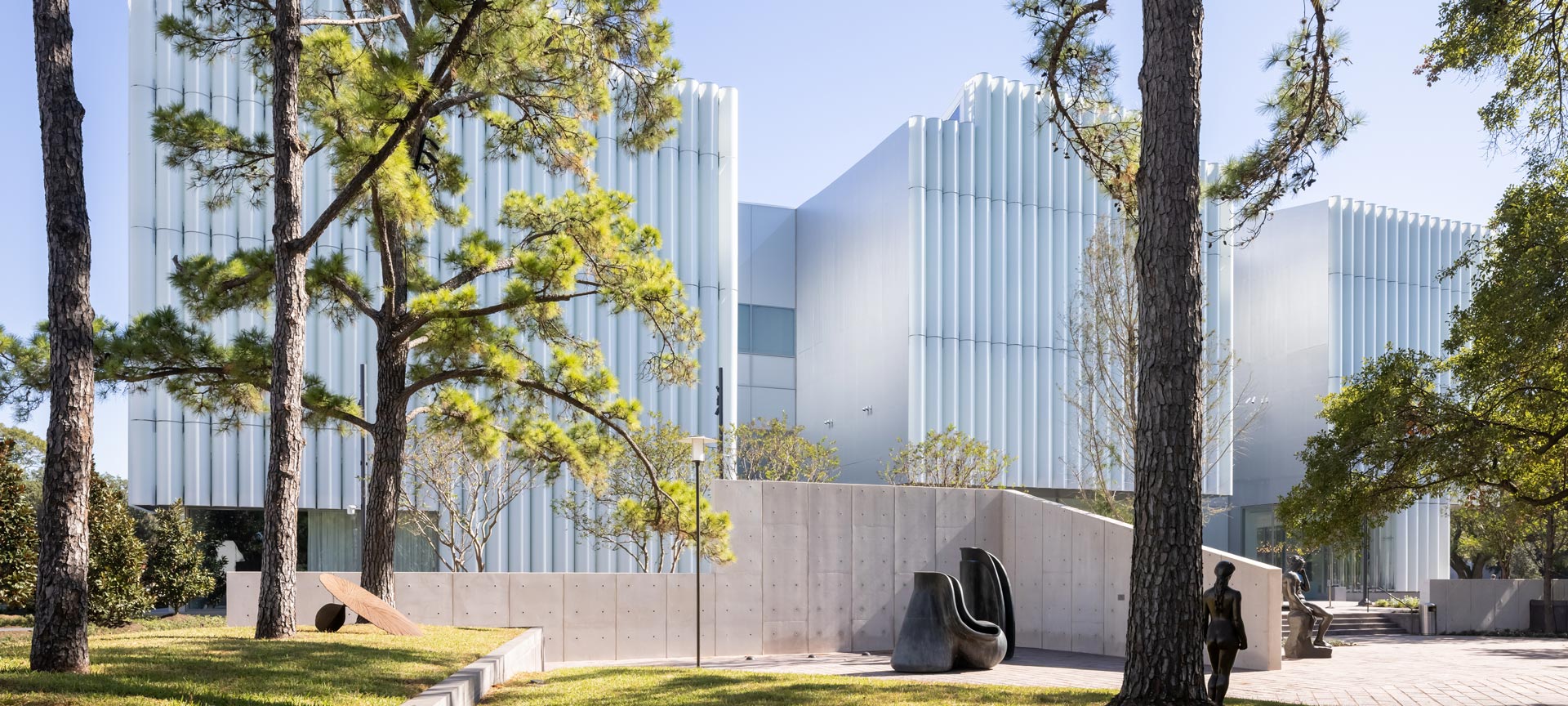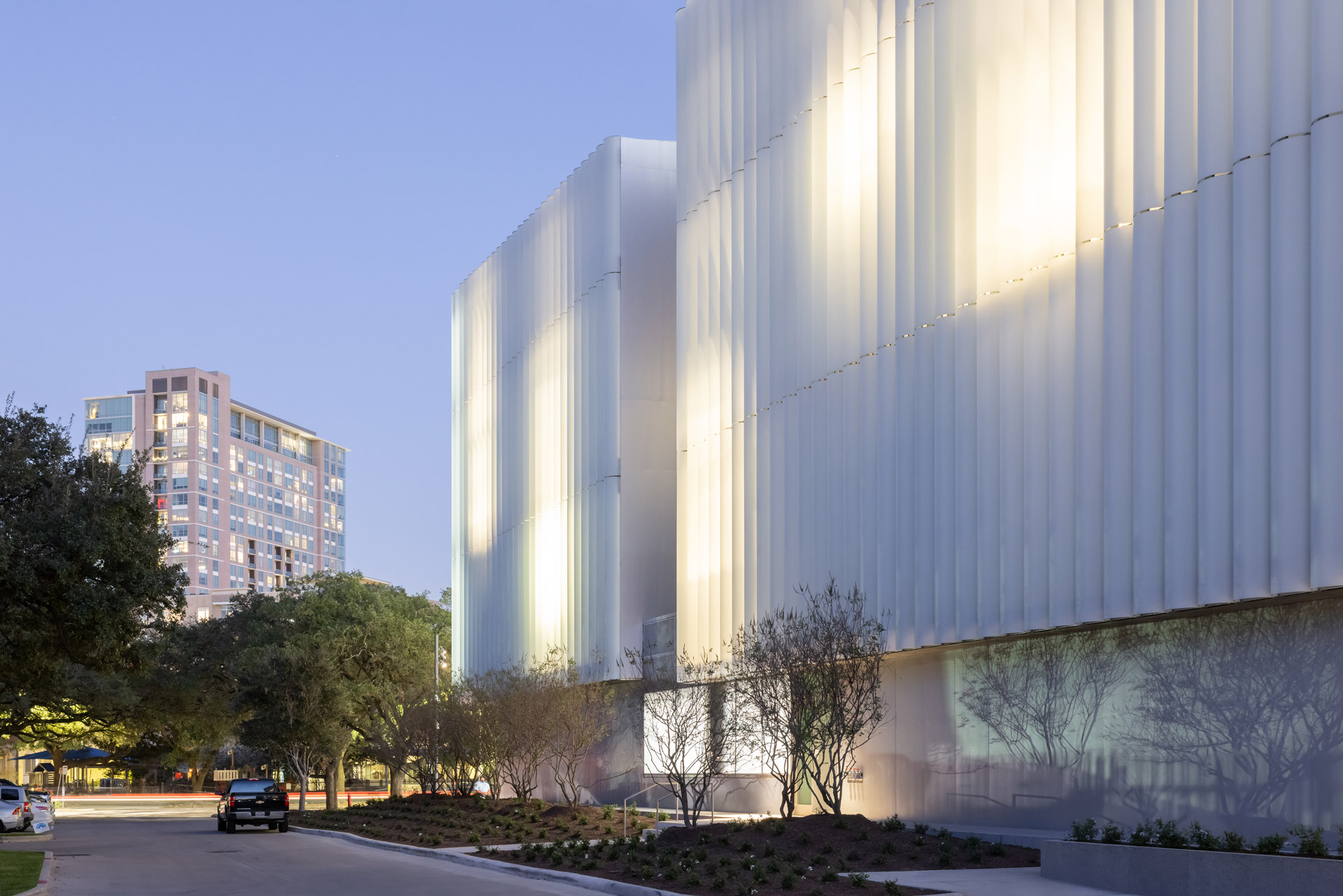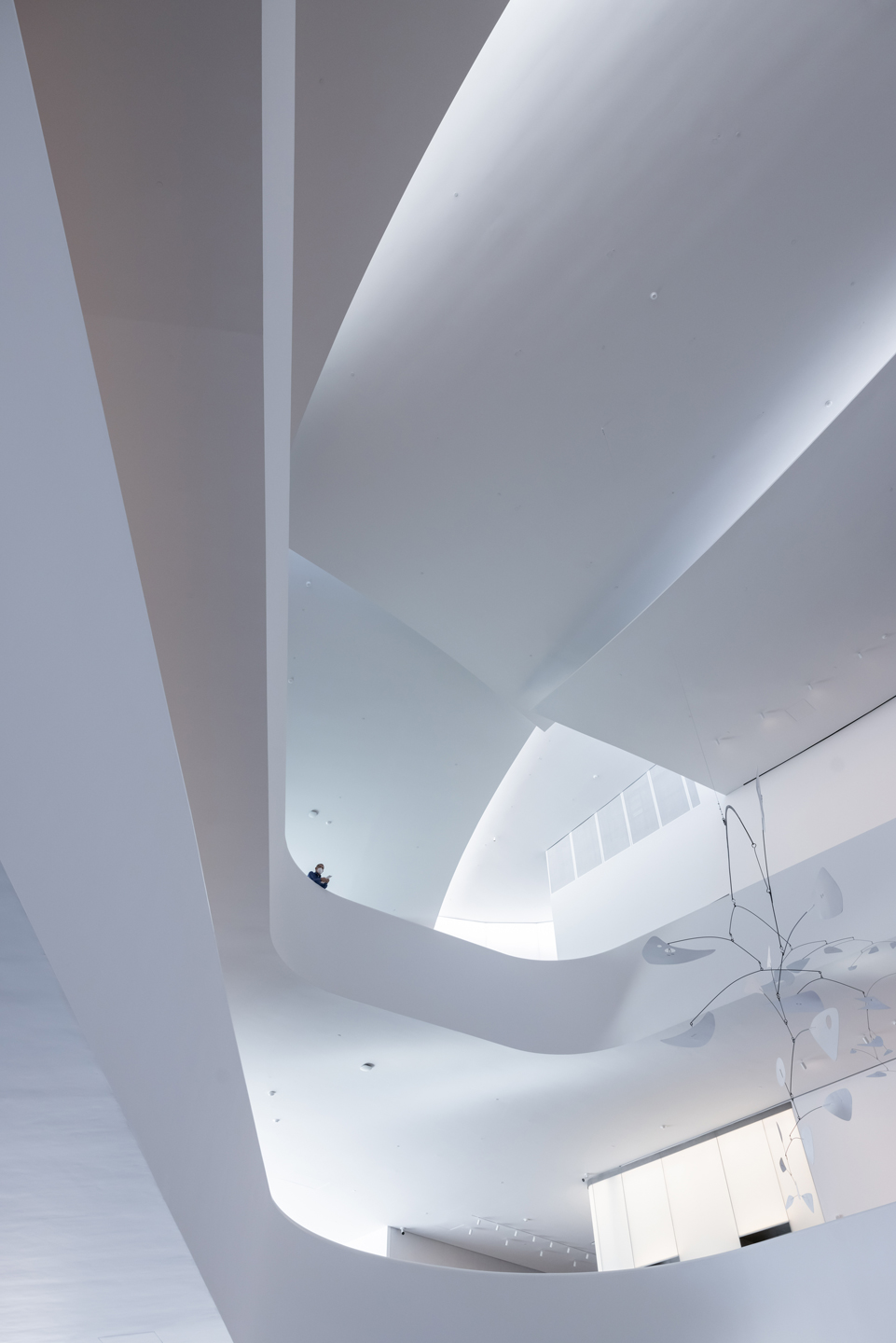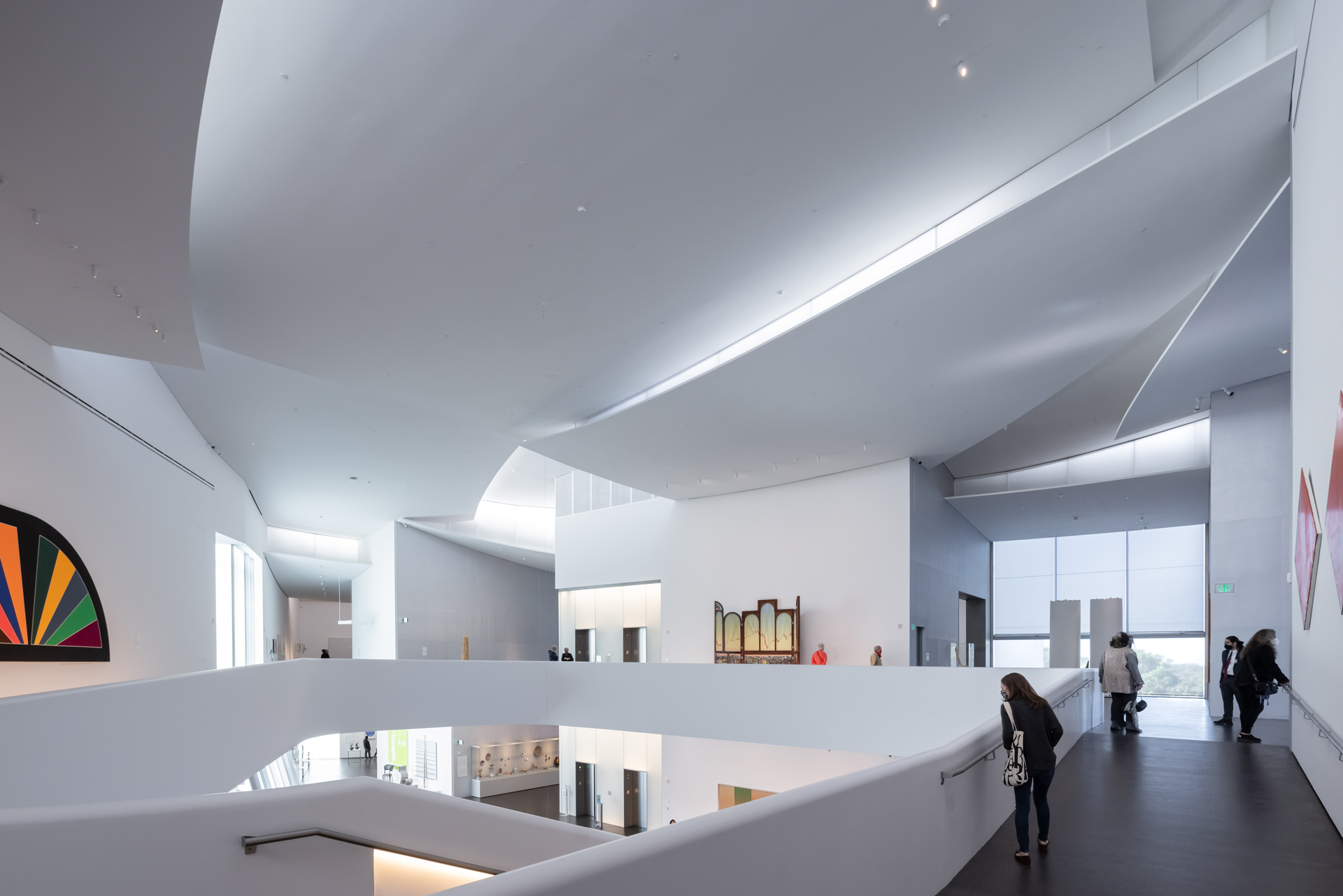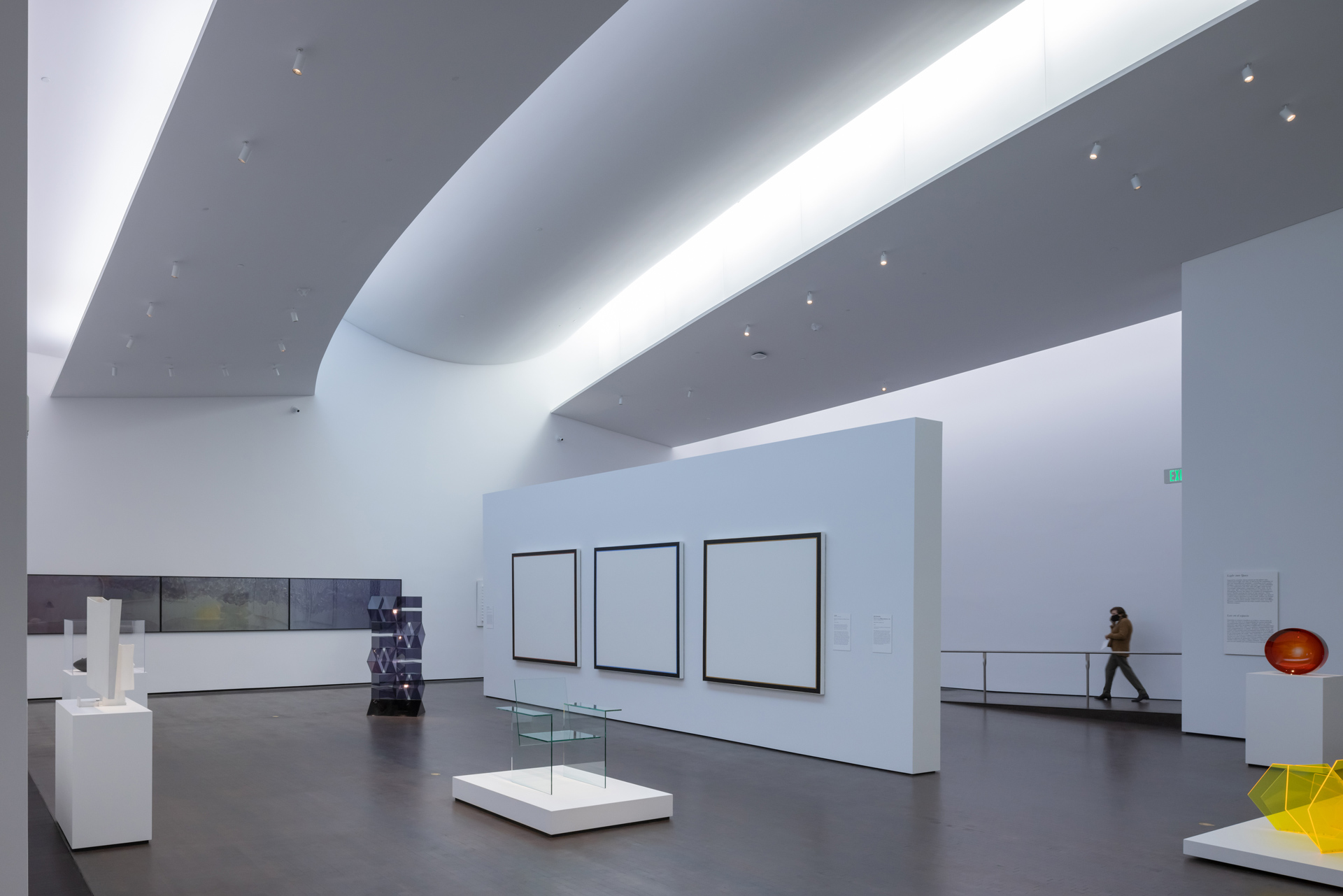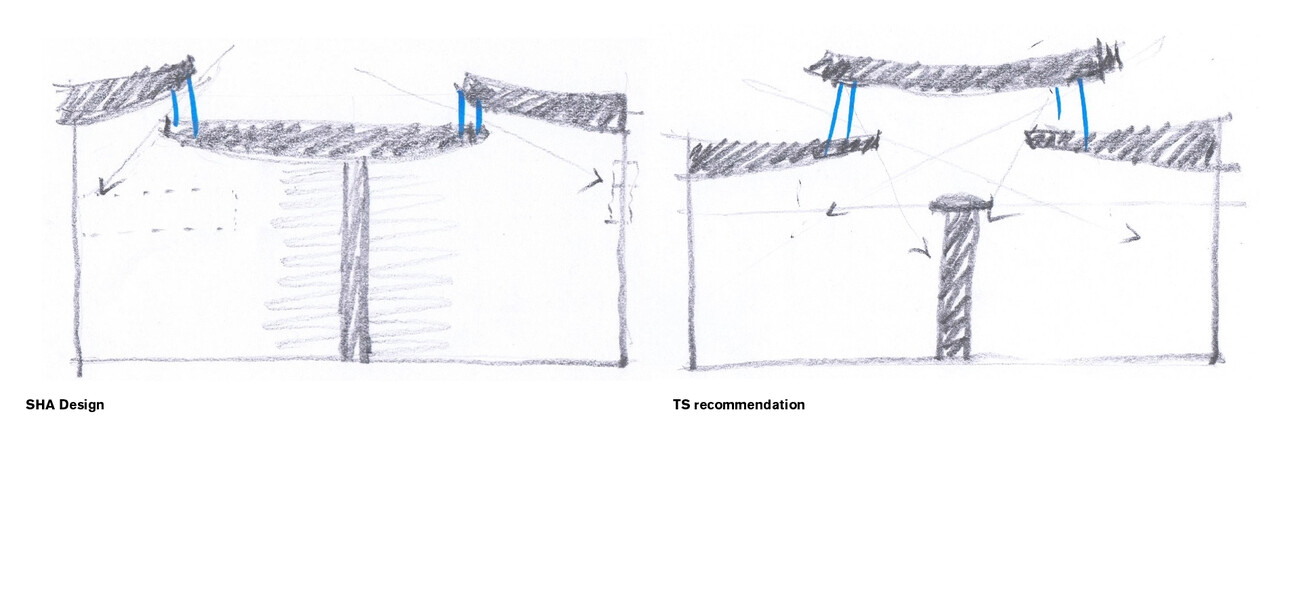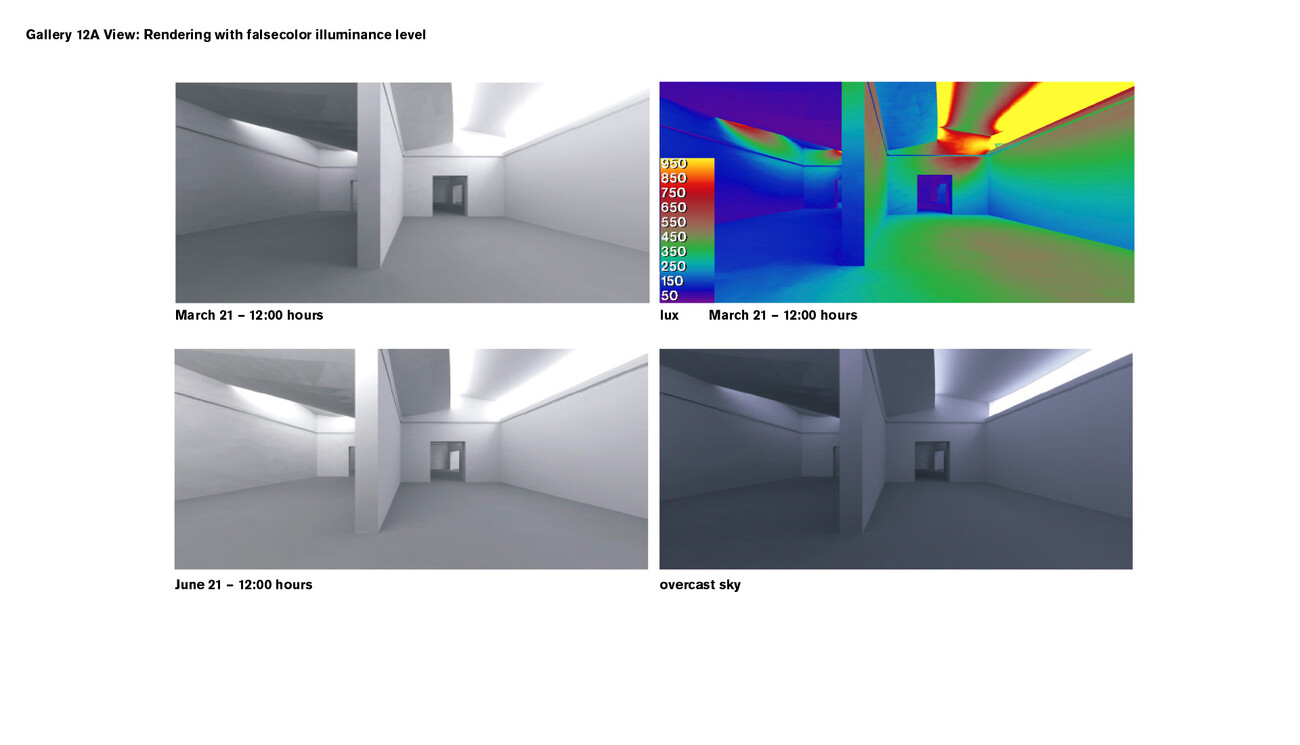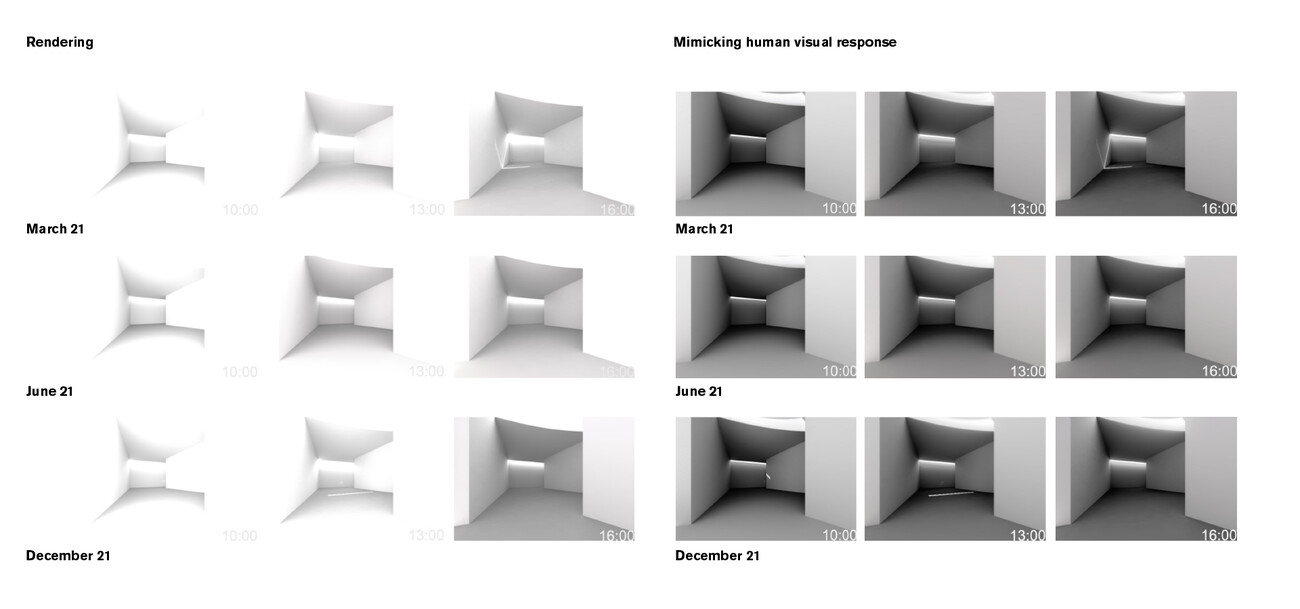Nancy and Rich Kinder Building MFAH, Houston, TX, USA
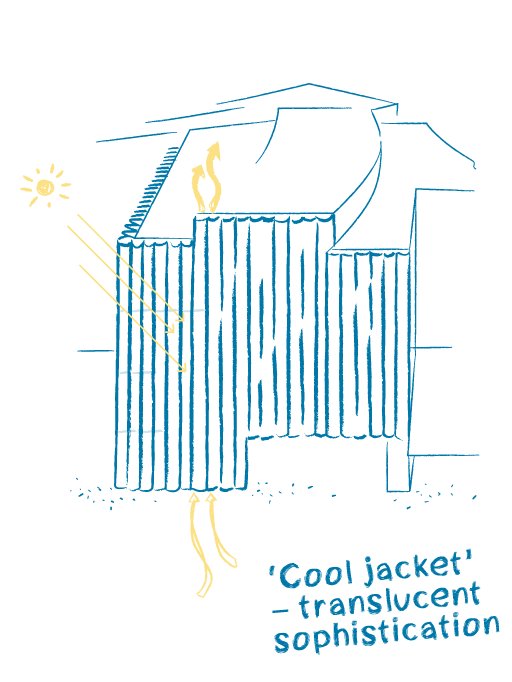
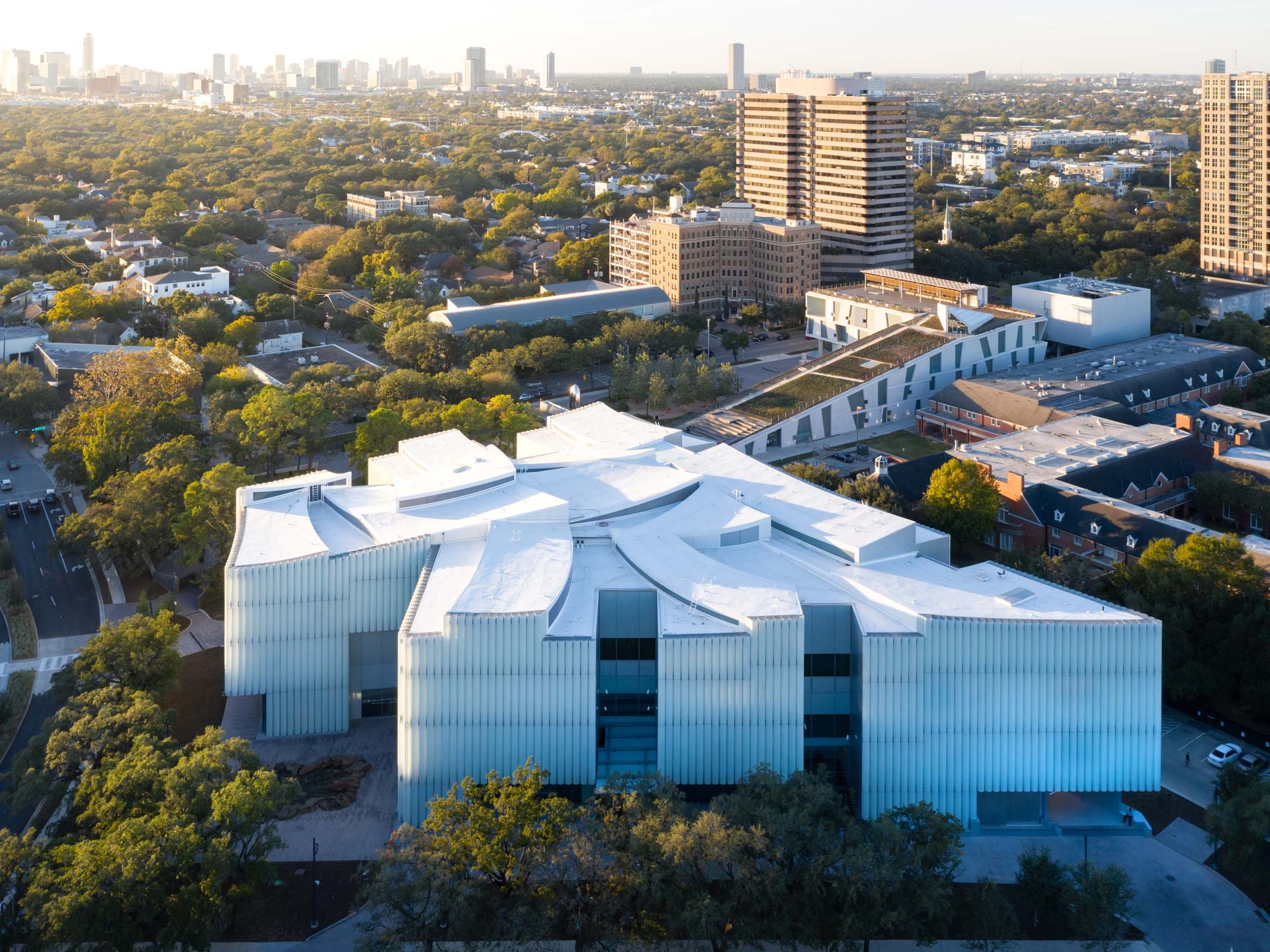
As described by Steven Holl Architects, “The architectural vision for the extension by SHA consists of horizontal massing of translucent glass. The curved glass elements wrapping most of the façade have a soft alabaster-like texture. A luminous canopy roof covers the new building. Concave curves, push down on the roof geometry, allowing natural light to slip in with precise measure and quality, perfect for top-lit galleries.” This contrasts starkly with the previous MFAH gallery buildings by Mies van der Rohe and Raphael Moneo, which rely either on heavy curtains to cut out excessive light or rooftop glass lanterns as the only daylight source.
Steven Holl and Matthias Schuler developed the idea of a secondary skin composed of frosted glass-tubes at the very beginning of design. The curved glass provides both uniform daylight for the windows in the inner facade and in addition acts as a ‘cool jacket’ by reducing the amount of solar heat gain into the building - critical for Houston’s sunny climate as well for the opaque wall elements. Visible and invisible solar radiation is captured by the outer glass layer and vented to outdoors via the top openings of the half-tubes. Different thermal studies quantified the ‘cooling’ effect: the ‘cool jacket’ assembly reduces the heat gain and cooling load for a gallery space by 35% compared to a building envelop following code requirements. The spectral properties of this complex façade buildup were evaluated and optimized in an iterative process considering aesthetics, cooling performance, daylight, and constructability.
Transsolar also helped shape the architectural design to provide optimum daylight quantity, quality and distribution; balancing a dynamic spatial experience with art conservation and display requirements in the gallery spaces. Gallery orientation, daily and seasonal variation of the sun position, and cloud cover were considered while evaluating various geometries and materials to fine-tune the daylight design.
Air supplied in the galleries controls the continuously fluctuating heat and humidity gains from people. Although designed for a maximum ventilation rate at peak occupancy, the system is capable of variable air volume operation to reduce the air delivered to less than 1 air change during periods of low occupancy. This operation provides very tight humidity control, and thus better conditions for art preservation than traditional constant-volume operation. Energy recovery and heat shift using both enthalpy recovery wheels and runaround heat recovery minimize energy consumption for conditioning of outside air while maintaining these tight conditions.
